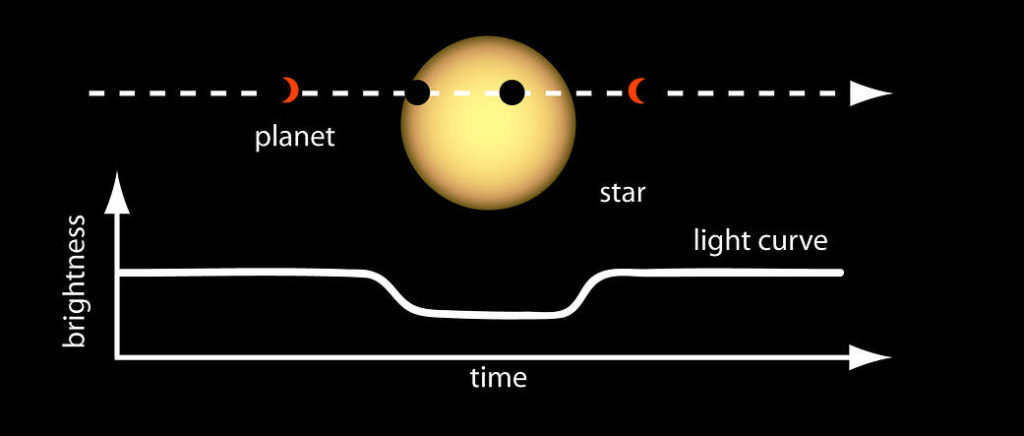More than 4,000 exoplanets, or planets orbiting stars other than the Sun, have been discovered throughout the Milky Way Galaxy. According to a recent study from the University of British Columbia, however, there are likely many more out there just waiting to be discovered — including as many as six billion Earth-like planets throughout the galaxy.
The study was led by Michelle Kunimoto, a graduate student in the Department of Physics and Astronomy, and published in The Astronomical Journal.
How many planets are there in the Galaxy?
Astronomers have long estimated that the Milky Way may be home to many billions of exoplanets, with almost all of the roughly 200 billion stars in the galaxy expected to host at least one exoplanet of its own. But if there really are billions of them out there, why have we only found a few thousand in the nearly three decades we’ve been searching?
The answer lies in both the limitations and biases of telescopes used to search for planets orbiting other stars.
NASA’s most successful exoplanet-finding mission to date, Kepler, searched for exoplanets using the transit method. While this method allowed Kepler to find roughly half of all exoplanets that have been discovered to date, it’s also biased towards exoplanetary systems that are oriented edge-on relative to our point of view.
Since the transit method works by measuring the amount of light that an exoplanet blocks when it passes in front of its host star, it’s also biased towards very large exoplanets located on very close-in orbits. These exoplanets will naturally block out more light, and will therefore be more readily detected by our telescopes.

What this means, however, is that there are many exoplanets our telescopes will miss entirely — smaller exoplanets closer in size to the Earth that orbit further away from their host stars, or those that aren’t aligned in just the right way to be detected by our telescopes.
How many exoplanets are we missing, and how many do we expect to exist in total throughout our Galaxy? To answer these questions, Kunimoto used a technique known as forward modelling to determine where exactly these exoplanet-hunting algorithms were falling short. This study was Kunimoto’s second in a series of searches through the entire Kepler space telescope database, with the first leading to the discovery of 17 new exoplanets throughout our Galaxy.
In this study, Kunimoto simulated a population of exoplanets that she expected to be a good match to the true population. She started with the population of stars, which we understand fairly well from previous astronomical surveys, and then drew physical and orbital properties for the simulated planets from models of what we expect planetary systems to look like. These models were typically based on what we know from planetary systems that have already been discovered.
In some cases, she had to make simplifying estimates — for example, she assumed that the planets in her population orbited in circles, rather than ellipses, and that the orbital inclinations (in other words, how the system is aligned relative to the observer) were uniformly distributed throughout her sample.
Kunimoto then used her detection algorithm to search for each simulated exoplanet in her population.
“I marked each planet as ‘detected’ or ‘missed’ depending on how likely it was my planet search algorithm would have found them,” she said in a press release. “Then, I compared the detected planets to my actual catalogue of planets. If the simulation produced a close match, then the initial population was likely a good representation of the actual population of planets orbiting those stars.”
By adjusting the specific details of her simulated population and redoing her search, Kunimoto was eventually able to create a population that resulted in similar detections to the actual population of detected exoplanets. Since she used the same search algorithm on her simulated population as she did on the real data, planets that were missed in her simulations would also have been missed in the actual data.
Up to six billion Earth-like planets may exist in our Galaxy
Once she had created the simulated population of exoplanets, Kunimoto then used it to draw conclusions about the real population of exoplanets — including placing a limit on how many Earth-like exoplanets might exist in our Galaxy.
She concluded that there are likely about 0.18 Earth-like planets per Sun-like star in our Galaxy, with an Earth-like planet being defined as one that is rocky, roughly Earth-sized, and located in the habitable zone (the location where liquid water may be able to exist on a planet’s surface). Since there are many billions of Sun-like stars in our Galaxy, this works out to as many as six billion Earth-like exoplanets throughout the Milky Way.
Kunimoto’s work will have important implications for the field of exoplanet science going forward.
“Estimating how common different kinds of planets are around different stars can provide important constraints on planet formation and evolution theories,” she said, “and help optimize future missions dedicated to finding exoplanets.”
Kunimoto’s study will help astronomers better understand the limitations of their detection methods, and improve on those detections methods going forward. By doing so, future exoplanet detection missions may be able to find many more of the six billion planets out there that may be similar to our own.











































